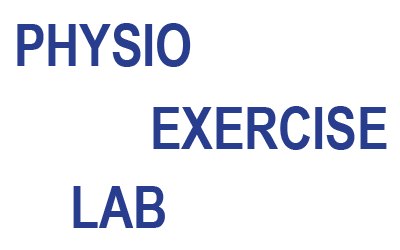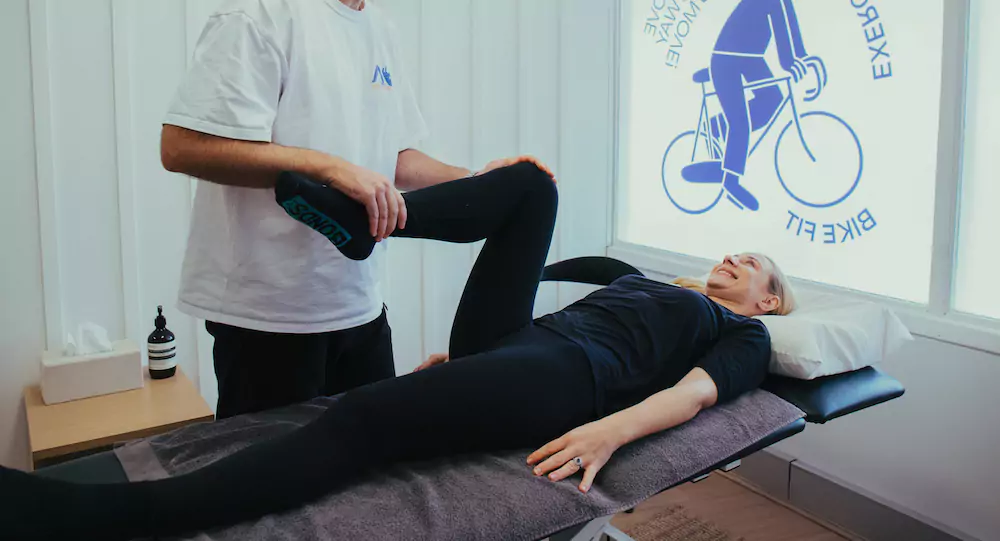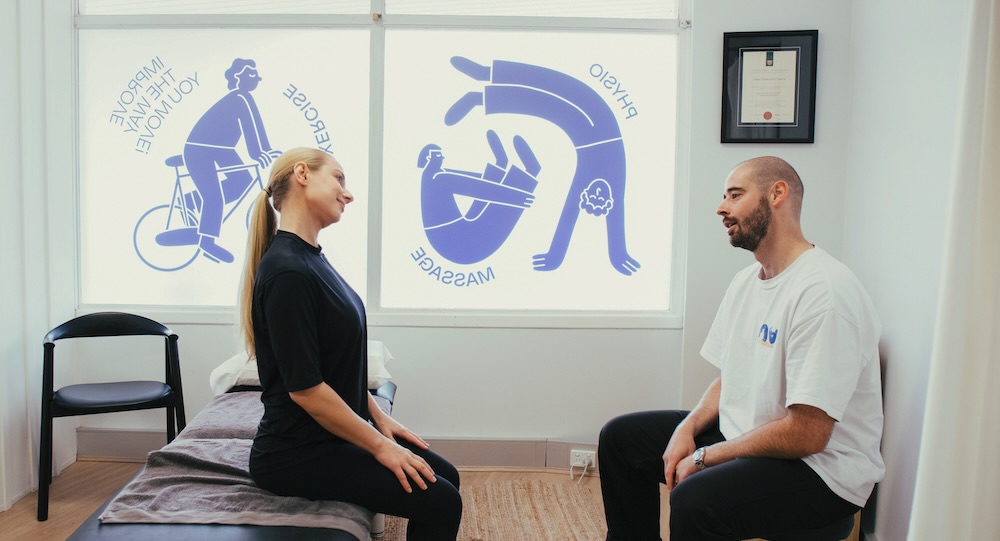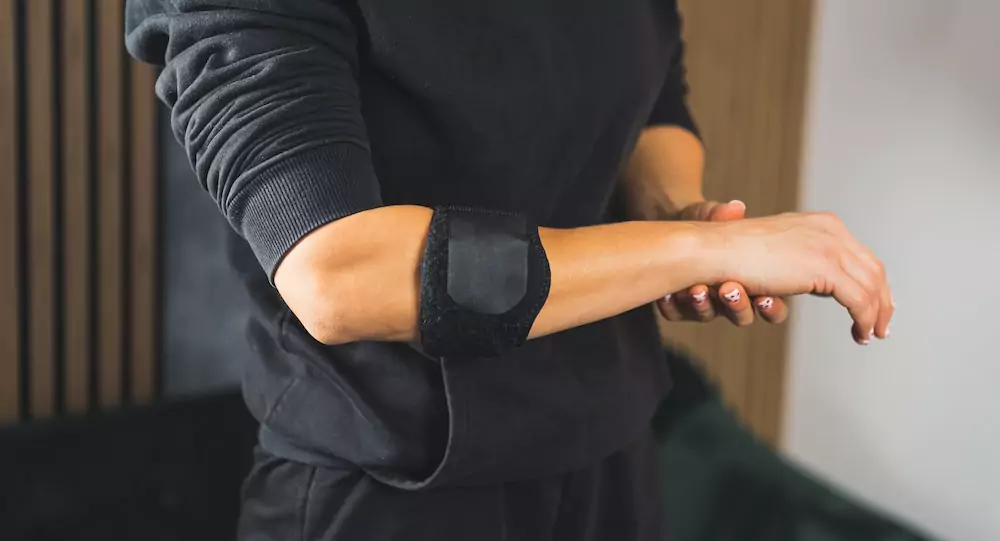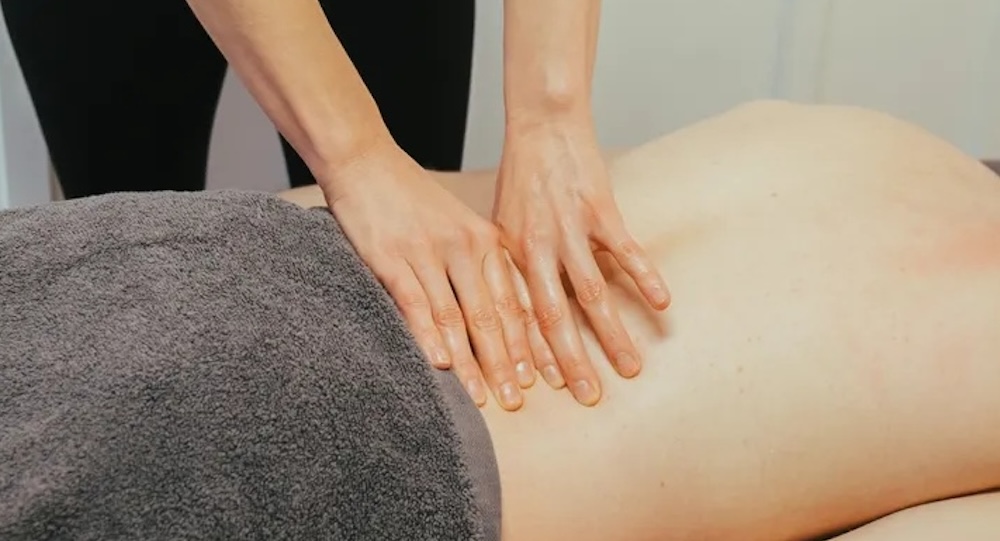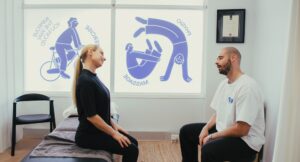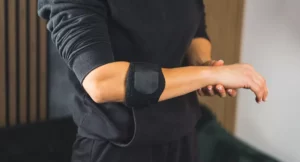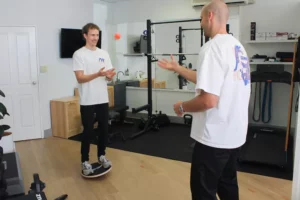Trying to decide what to wear to physio? I always recommend choosing clothing that is non-restrictive and comfortable.
In this simple guide, I’ve broken down what to wear to physio appointments based on the type of injury or area being treated to help ensure you are as comfortable as can be.
My General Recommendations
- Comfortable clothing that is loose and does not restrict your movement
- Comfortable sneakers, exercise shoes, or running shoes that are easily removed and offer good support
- Gym clothes, sweatpants, a loose fitting top or tank top, or other stretchy comfortable clothes
- Warm socks or grip socks, if desired (some patients prefer to avoid being barefoot if they need to remove their shoes)
- Avoid jeans or tight pants, belts, tight tops, shoes with poor support, or skirts
- Avoid wearing necklaces or bracelets
What to Wear Based on the Type of Physio Appointment
The main goal is to wear clothing that makes it easy to see and access the affected joints, muscles, and skin for effective treatment.
Wearing clothes that easily reveal the affected area maximises treatment time and helps the appointment go smoothly.
Here is my breakdown of what to wear to a physio appointment based on the type of injury that is being assessed and treated.
| Type of Physiotherapy | Recommended Clothing |
|---|---|
| Musculoskeletal and Sports Physiotherapy | Comfortable, loose-fitting clothing that allows easy access to the affected area. Loose-fitting shorts for lower body injuries. A tank top or a loose T-shirt for the upper body. |
| Cardiopulmonary Physiotherapy | Loose, comfortable clothing that doesn’t restrict breathing or movement. Tops that can be easily removed or adjusted for chest examination. Tank tops or loose T-shirts are ideal. |
| Neurological Physiotherapy | Clothing that allows freedom of movement and is comfortable, with supportive footwear. This type of physiotherapy often involves exercises that assess coordination and motor skills. |
What to Wear for Specific Injuries
Here are my recommendations on what to wear to physio for specific injuries:
- Neck: Opt for tank tops or loose shirts with wide necklines
- Back: Choose a loose-fitting shirt or top that can be easily lifted or removed and comfortable, loose pants that can be easily lowered if the physiotherapist needs to assess your lower back
- Chest: A loose shirt or top that opens or can be removed easily is ideal
- Arms: Sleeveless shirts or tank tops provide easy access to the shoulder, elbow, and wrist
- Legs (including the knees and thighs): Loose shorts are best for lower body injuries as they reveal the area and allow for excellent range of motion
- Ankles and Feet: Loose pants that can be rolled up or shorts, with easy-to-remove shoes and socks
- Hands: Short-sleeved shirts or tops with sleeves that can be easily rolled up.
- Head and Facial Issues: Minimal makeup and jewellery facilitate treatments close to these areas. You may also want to consider a shirt with a fairly loose neck line, as access to the neck can be important for head issues.
- Hips: Comfortable loose pants or shorts and a top that is easy to lift up if needed
- Shoulder: Sleeveless tops or tank tops for easy shoulder access
- Spinal Injuries: Two-piece outfits are preferable for lower back or spinal issues.
- Post-surgical Rehabilitation: Loose, comfortable clothing that accommodates bandages, casts, or any surgical dressings, with easy wearability
What Else Should I Bring to My Physio Appointment?
Along with knowing what to wear to a physio appointment, here are a few key things I suggest to bring along to get the most out of your session:
- If you are coming to your physiotherapy session from work or elsewhere, plan ahead and bring a change of comfortable clothes along
- Your ID, insurance cards and information, Medicare card, and a list of any medications you are taking
- Light layers in case you get cold (for instance, if you wear a tank top for a shoulder physio appointment, it can be helpful to have a light cardigan or sweater along)
- A friend or family member who can observe how the exercises are performed and take notes for you, if desired
There is no need to bring a notebook and pen to jot down any notes, I always provide my patients with detailed treatment plans to take home and follow.
What to Expect During Your Appointment
During a physio appointment, expect to discuss your injury, how it occurred, and how it is affecting your life.
I also like to learn what my patient’s goals are for treatment and let them know what my treatment goals are for them.
Physiotherapy is a team effort and I want my patients to feel supported and informed through the entire process.
Physio appointments also include an initial physical assessment of the injury or areas of pain or assessments to evaluate progress.
Conclusion
Preparing for a physiotherapy appointment involves selecting comfortable, loose-fitting clothing that allows for unrestricted movement and easy access to the area being treated.
Whether you’re attending a session for musculoskeletal issues, neurological rehabilitation, or women’s health, the right attire can significantly enhance the effectiveness of your treatment.
Remember to also bring necessary personal items, light layers for comfort, and a notebook for jotting down important notes.
Effective physiotherapy is a collaborative effort, and being well-prepared for your appointment ensures you get the most out of each session.
If you’re in Western Australia and looking for expert physiotherapy services, book in with our physios in Melville today with our online booking system.
Our experienced team is ready to support your journey to recovery with personalised treatment plans tailored to your needs.
